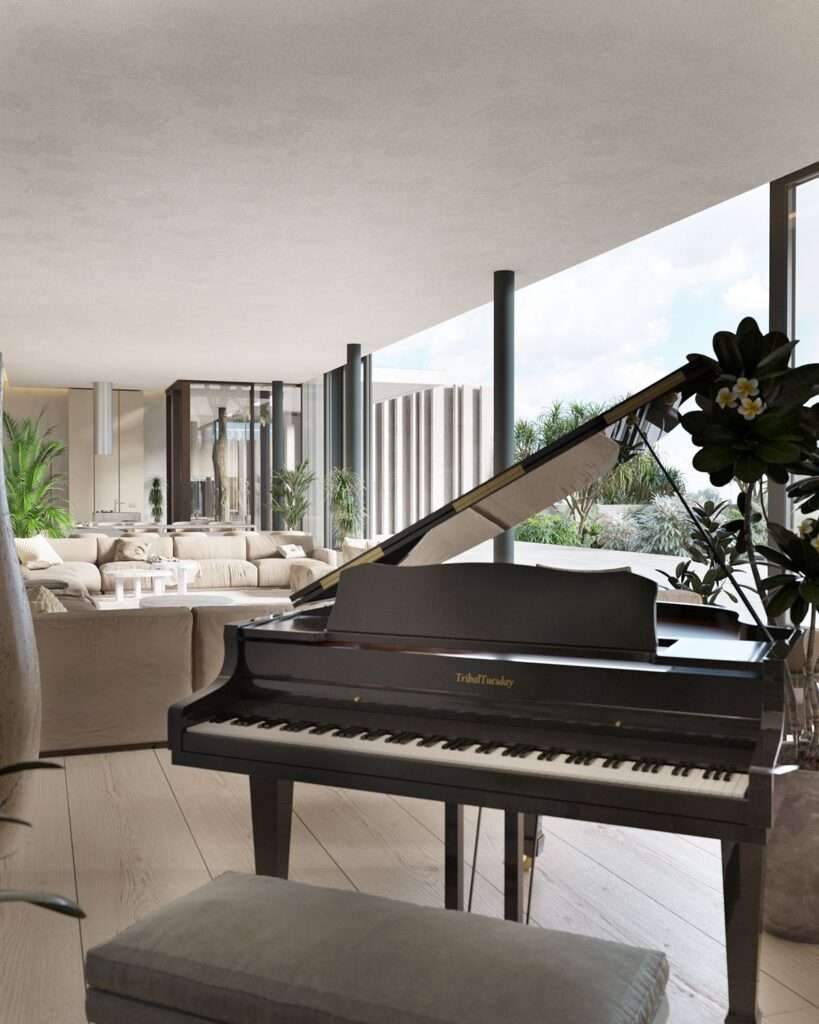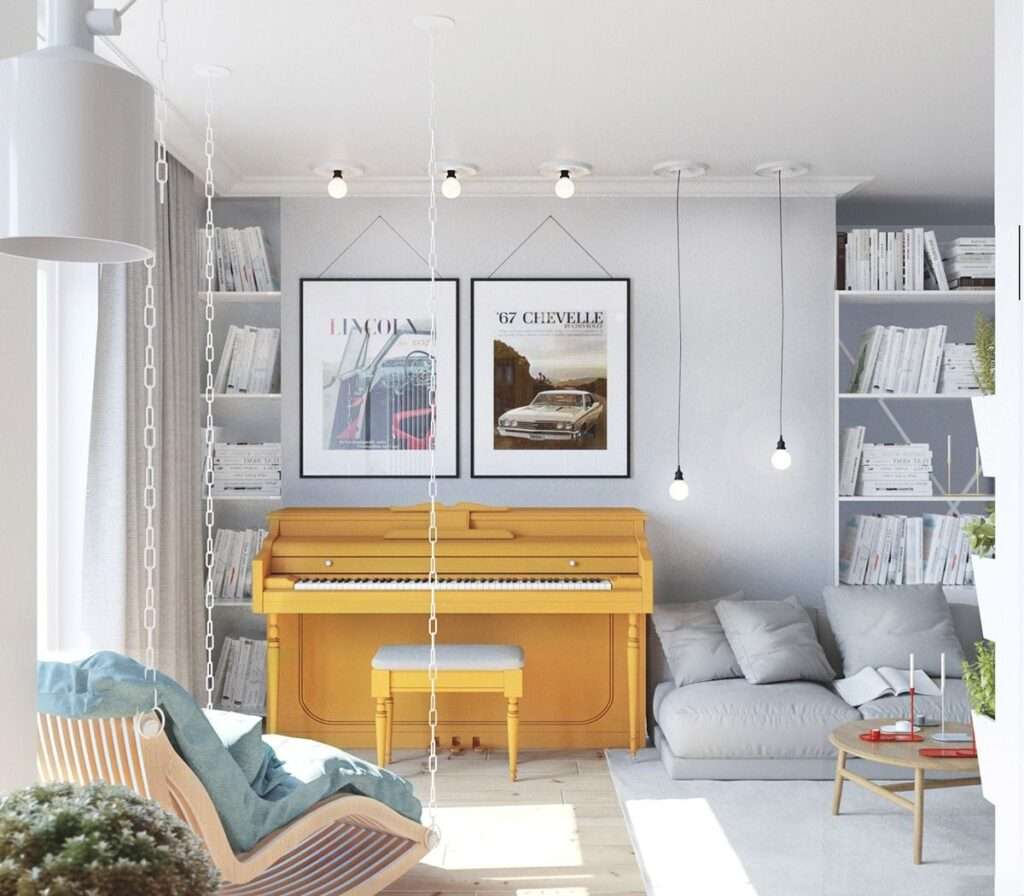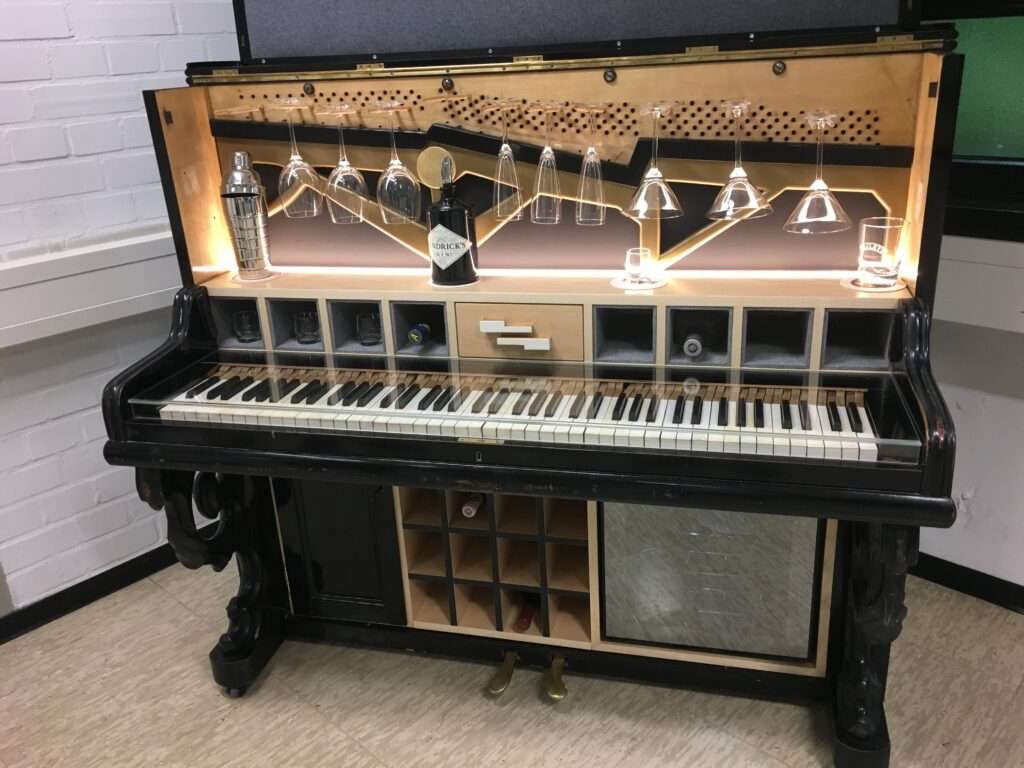Nothing speaks luxury like a grand piano in interior décor. Pianos have evolved from being just musical instruments to magnificent design elements in luxurious spaces. While a piano is a major investment as well as a fine outlet for your musical passion, it is impossible to forget that pianos, both grands and uprights, also have inherent cultural resonance. Just remember the countless commercials, movie sets, and interior design magazines where pianos are often featured just to set the tone of the scene. The universal appeal of pianos as design elements proves that pianos can be just as decorative as they are functional.
Whether you’re a master musician, or you just inherited a piano, adding a piano to your home is a great way to show off your personal style. Here are eight ways you can use your piano to add color, flair, and character to your home.
A Decorative Focal Point
Accessorize your home and add a dramatic focal point to your interiors with a grand sophisticated piano. To make your piano the main attraction in a room, place it near an accent wall or against the wall with the best lighting. Whether it’s a small upright piano taking center stage in a living room, or a grand piano against a patterned accent wall in an entryway, pianos are sure to draw attention and add visual interest that makes people take notice.
Fill Up Space
If you have an empty room that needs some personality, try placing a grand piano in it. It will immediately give the space character, having a major uplift on your home interiors. Consider adding a piano to an empty corner in your living room or an unused space under the staircase. Depending on the size of the vacant area, you can go for a more compact spinet piano, console piano, or studio piano. Alternatively, you can opt for a massive grand piano that is proportionate to the space.

LINES Interior design, Behance, via Pinterest
Be sure to position your piano away from direct sunlight, fireplaces, drafty windows, or any places with constant changes in temperatures. This might not only cause fading to your piano’s finish, but it can also compromise the sound and affect its tuning.
An Artistic Piece in a Collection
Art meets music when a piano is installed as an artistic piece in your interiors. Place your piano alongside other art pieces such as paintings and sculptures to create an eclectic gallery feel where every piece is unique but still contributes to the overall aesthetic of the collection. You can place a vintage piano set against a gallery wall, hanging art above and around it for a stimulating display.
Pianos are highly delicate despite their size. Therefore, if you own a functional piano set, avoid placing any art pieces on top of the piano, even if you have a piano light and work will the wall behind the piano instead.
Cozy Up a Room
Incorporating a piano in your design is a brilliant way to add warmth to your home interiors. Adding a piano with a wood finish against warm lighting can transform any space into an intimate and relaxing setting. The warm tones of the earth hues create a cozy ambiance that will leave your house feeling inviting and homey.
Add a Pop of Color

Scandinavian Style, Home Designing, via Pinterest
Adding a piano with a bold colorful finish can be an excellent way to give neutral or minimalistic interiors an extra kick. For a cohesive look, you can center the color palette of your room design around your piano set, or simply let it stand out in contrast. Just remember that the eyes will be drawn to the most vibrant piece in the room.
-
Complement Your Design Style
Because pianos come in so many shapes, sizes, colors, and finishes, you can find one that perfectly complements the aesthetic in your home. A sleek black or white piano works perfectly for a modern or minimalist décor. If you prefer a traditional theme, consider buying an antique or vintage piano. Contemporary homes work best served by pianos with clean lines and simple finishes.
Create a Music Room
If you play the piano regularly, you can create a functional music room fit for a performance in your home. In this case, it is crucial to consider the acoustics in your layout. Position your grand piano with its longest edge parallel against an inner wall for the best sound quality. Give your guests something fun to do by turning the piano into an interactive design element that will leave guests feeling like they have just stepped into their very own music recital.
Remember, the same piano can sound completely different depending on how many soft or hard surfaces are in the room where your piano is played. If there are bare floors and lots of windows without drapes your piano might sound too loud or bright. If there are heavy rugs and drapes and deeply cushioned couches in the room your piano will sound softer and less “bright”. Ask your piano technician for advice when it comes to optimizing the acoustics of your piano room.
Repurpose Pianos to Furniture

Repurposed Piano, Lukas Bongartz, via Pinterest
If you have an old upright piano that is no longer in use, why not repurpose it into a functional furniture piece? Depending on the size of the piano, you can turn it into a wine bar, a bookcase, a coffee bar, a buffet table, a work desk, a garden bed, or even a handy console table.
Conclusion
Having a piano in the house is like having a piece of art that you can actually play. Even if your keys are more suited to decorating than they are to playing, it is hard to beat the visual and auditory pleasure of having a piano in your home interiors. It is a statement piece that can tie together the décor of an entire room if done right

